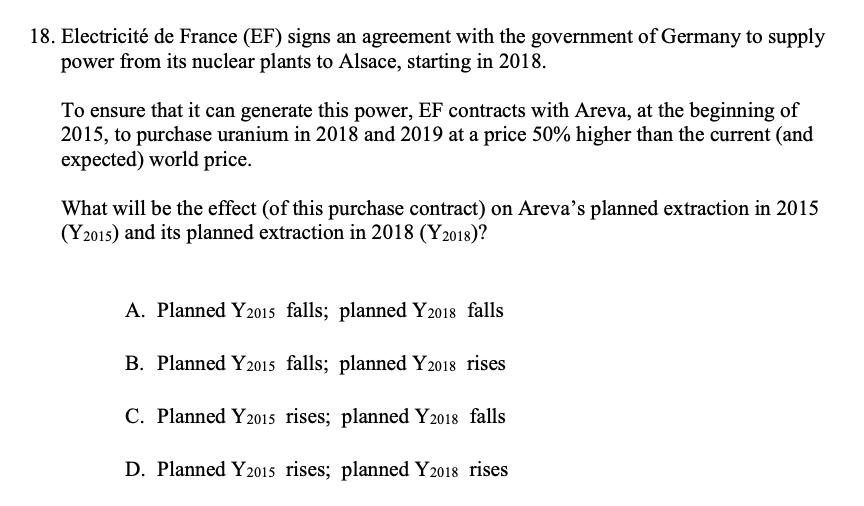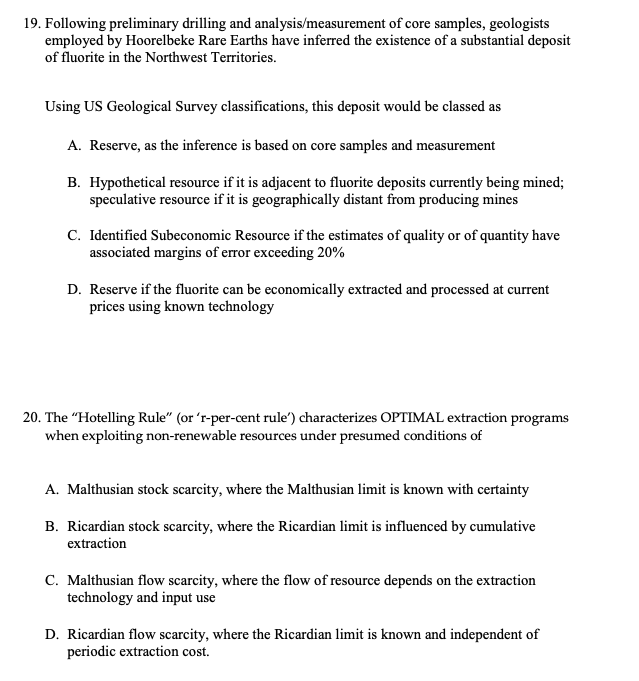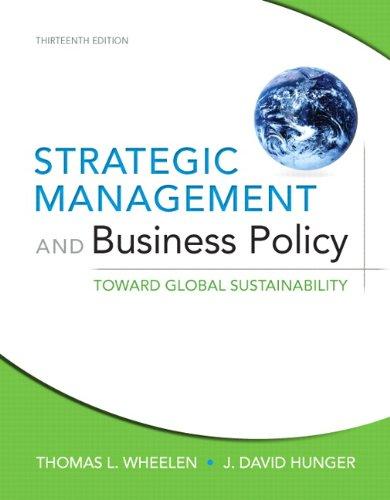The following information is to be used for Questions 17 and 18 Areva NC extracts uranium from deposits licensed by the government of Niger. Assume that the cost of extraction can be expressed as CY. /S, , where Ytrepresents amount extracted over the course of period 't', and Strepresents the amount of minable uranium in the ground at the beginning of period 't' The price at which each unit of uranium is sold is less than 62 (Areva sells to European buyers and expresses all money values in terms of euros). Areva has signed an agreement with officials in Niger that allows extraction from the deposit over the next five years (2015-2019). 17. At the beginning of fiscal 2015, as the industrialized world is threated with recession stemming from U.S. 'debt-ceiling' debates, Greece bond default, and terrorist threats to Middle East oil production, Areva's investment opportunities are re-evaluated. Its expected interest return on all of its assets is reduced from 5% to 3% for all years 2015- 2019. What will be the effect on Areva's planned extraction in 2015 (Y2015)? A. Y2015 falls B. Y2015 is unchanged, as no uranium ore has yet been extracted (no depletion has taken place) C. Y2015 rises D. The effect on Y201s cannot be determined18. Electricite de France (EF) signs an agreement with the government of Germany to supply power from its nuclear plants to Alsace, starting in 2018. To ensure that it can generate this power, EF contracts with Areva, at the beginning of 2015, to purchase uranium in 2018 and 2019 at a price 50% higher than the current (and expected) world price. What will be the effect (of this purchase contract) on Areva's planned extraction in 2015 (Y2015) and its planned extraction in 2018 (Y 2018)? A. Planned Y2015 falls; planned Y2018 falls B. Planned Y2015 falls; planned Y2018 rises C. Planned Y2015 rises; planned Y2018 falls D. Planned Y2015 rises; planned Y2018 rises19. Following preliminary drilling and analysis/measurement of core samples, geologists employed by Hoorelbeke Rare Earths have inferred the existence of a substantial deposit of fluorite in the Northwest Territories. Using US Geological Survey classifications, this deposit would be classed as A. Reserve, as the inference is based on core samples and measurement B. Hypothetical resource if it is adjacent to fluorite deposits currently being mined; speculative resource if it is geographically distant from producing mines C. Identified Subeconomic Resource if the estimates of quality or of quantity have associated margins of error exceeding 20% D. Reserve if the fluorite can be economically extracted and processed at current prices using known technology 20. The "Hotelling Rule" (or 'r-per-cent rule') characterizes OPTIMAL extraction programs when exploiting non-renewable resources under presumed conditions of A. Malthusian stock scarcity, where the Malthusian limit is known with certainty B. Ricardian stock scarcity, where the Ricardian limit is influenced by cumulative extraction C. Malthusian flow scarcity, where the flow of resource depends on the extraction technology and input use D. Ricardian flow scarcity, where the Ricardian limit is known and independent of periodic extraction cost









